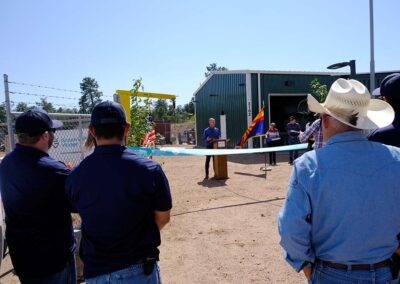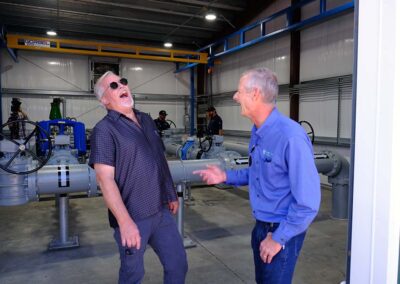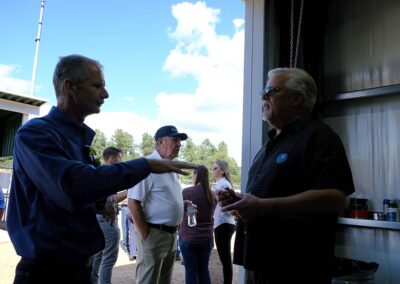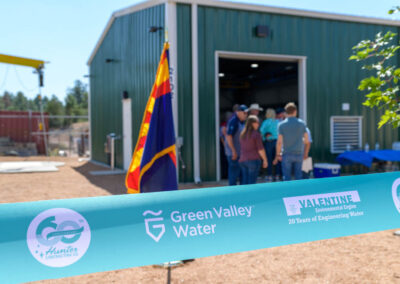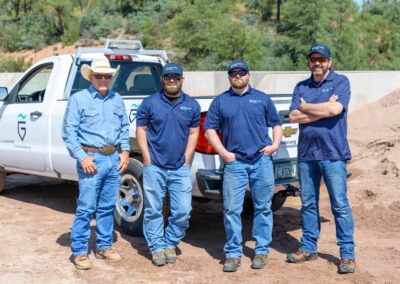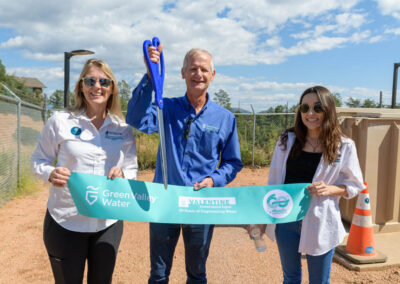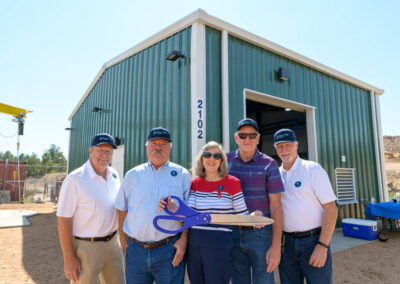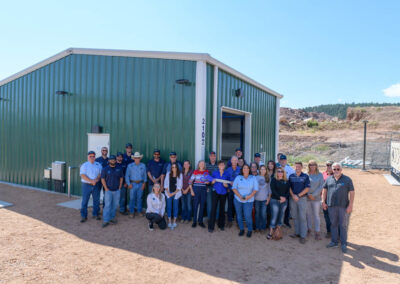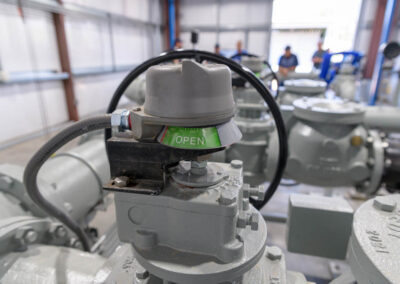Payson Civil Engineer redesigns essential lift station 25 years later
Payson Civil Engineer redesigns essential lift station 25 years later
New state-of-the-art Chaparral Pines wastewater lift station will benefit the Town of Payson and surrounding areas for years to come.
Published: 11/5/2021
“Flush and Forget” has been the motto of Green Valley Water, originally known as Payson Sanitary District, since its inception as a municipal corporation organized as a special taxing district in 1965. Outside of Green Valley Water’s staff of engineers, licensed employees, and office administrators, few spend much time thinking about the material leaving Payson homes and businesses that end up at their water reclamation facility. For 56 years Green Valley Water has, without much fanfare, converted the town’s original septic systems into the state-of-the-art facility that it is today, maintaining almost 175 miles of underground pipes from as far north as Mesa Del Caballo to the town’s southern limit and extending east to Chaparral Pines and The Rim Golf Club, daily processing over a million gallons of wastewater, reclaimed organically and released back to the community through a system of lakes, golf courses, and fields. With two new Green Valley Water achievements, it’s time to shine the spotlight on that “obscure agency at the end of the golf course.”

Green Valley Water, District Manager Garrett Goldman, and Board of Directors, Chairwoman Shirley Dye cut the ribbon at Chaparral Pines, Lift Station Three’s Grand Opening Event.
Central to both achievements is Green Valley Water’s district manager, Garrett Goldman, P.E., a Payson High School graduate who left the community to pursue a mechanical engineering degree in a field dominated by the defense industry in the 1990s. After graduating from Arizona State University in 1993, Garrett was hired as a civil engineer for a local engineering firm where he designed lift stations in Chaparral Pines in addition to sewer designs that supported the district’s master plan. As district manager, now a quarter-century later, Garrett has had the unique opportunity to re-evaluate and redesign one of his earlier projects as well as upgrade Green Valley Water’s information system which stores and maps data for analysis both in the field and at the plant.
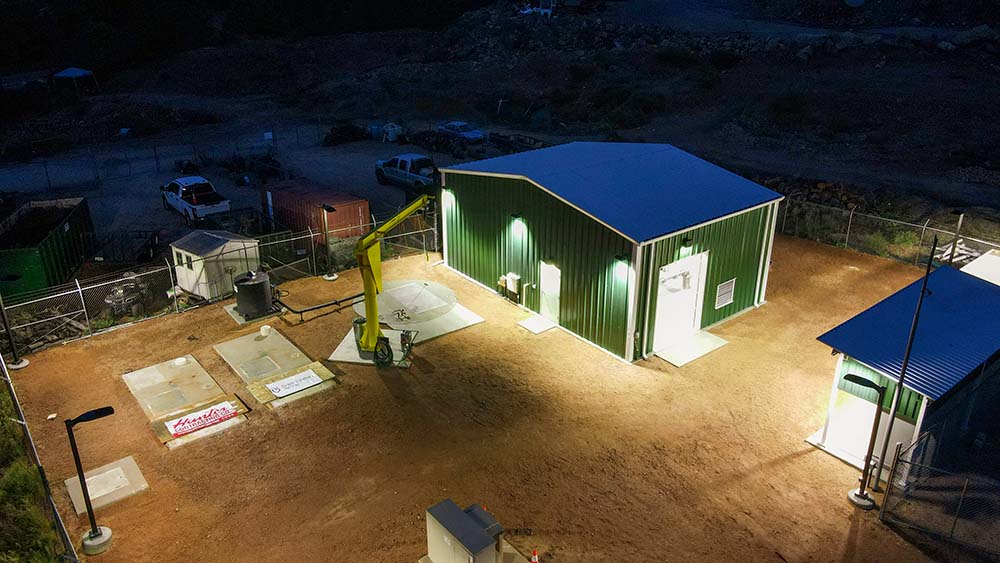

For the past two years, largely unnoticed by the residents and visitors of Chaparral Pines, Green Valley Water has been constructing a new Chaparral Pines Lift Station 3, a station that services the entire Tyler Parkway corridor. Though gravity pulls much of Payson’s waste to the water reclamation facility, the hilly terrain in some areas requires assistance; this is achieved through lift stations of which there are 14 located around the town, with two in Mesa Del Caballo, three in Chaparral Pines, and one in The Rim Golf Club.
Back in 1996, the topography of the Chaparral Pines area necessitated a Low-Pressure Sewer system with a grinder pump at each home site pushing waste to Lift Station 3 and its two rectangular wet wells, essentially concrete vaults above which were mounted suction pumps creating a vacuum to force the water up. But the introduction of popular “disposable” sanitary wipes regularly clogged the lift station preventing the needed vacuum effect and requiring crews and pumper trucks to haul the waste, two to four times a week. By 2019, the original lift station had exceeded its original useful life of 20 years, and plans for a new Lift Station 3 took shape.
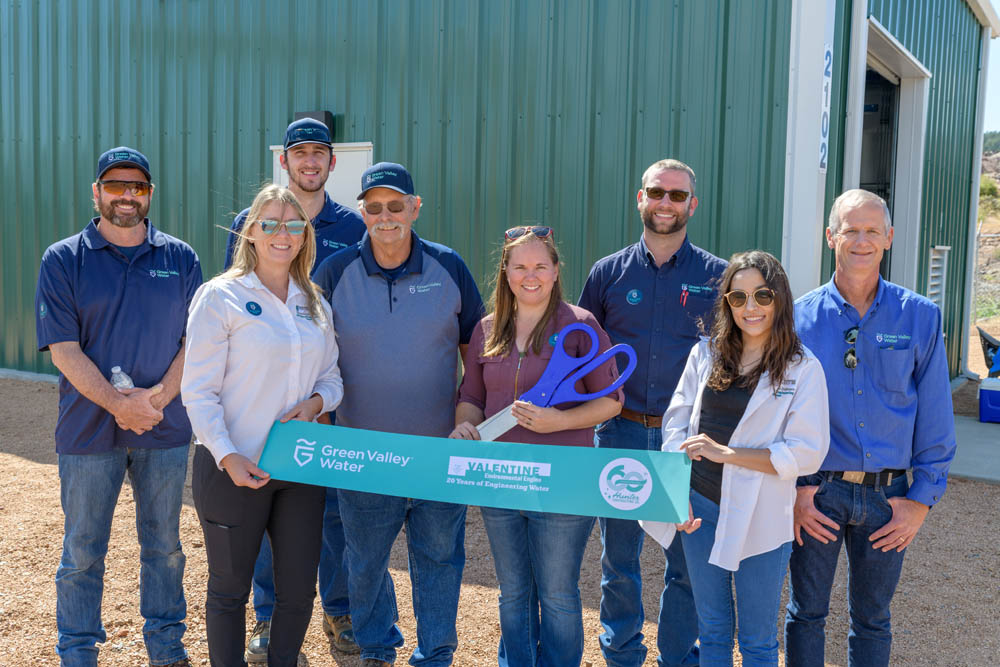

Members of the Green Valley Water, Valentine Engineering, and Hunter Contracting teams pose for a picture at Chaparral Pines Lift Station 3 ribbon-cutting ceremonies.
With the old lift station still performing, Green Valley Water commissioned Valentine Environmental Engineering to design a significantly larger lift station on the same property using submersible pumps and a round, polymer concrete well, eliminating material-collecting corners and the need for liners to prevent corrosives from reacting with the concrete. Hunter Contracting Company constructed the lift station and wells with Automation Electric, a local company, handling the electrical design work. Equipped with variable frequency drives which can be slowed down as needed, the new lift station is different only in the way it pumps rather than in the volume of waste it pushes along. Without any interruption of service, the new Lift Station 3 came online on October 1, 2021, at the cost of just over $1.5 million. For its customers, this project offers savings by reducing maintenance labor issues and by ensuring zero violations and costly fines that might be assessed by Arizona Pollution Discharge Elimination System (AZPDES) for any waste that contacts the ground, and Arizona Department of Environmental Quality (ADEQ) for environmental hazard concerns related to compliance, monitoring, and cleanup. For Garrett Goldman, this project offered him the chance to rework his own design as a young engineer. Having accrued 21 years of mechanical and now civil engineering experience, he had an opportunity that few ever do: completely update and redesign a lift station he previously designed. Similar improvements are planned for Mesa Del’s two lift stations in 2022 and 2023, building anew before demolishing the old ones.
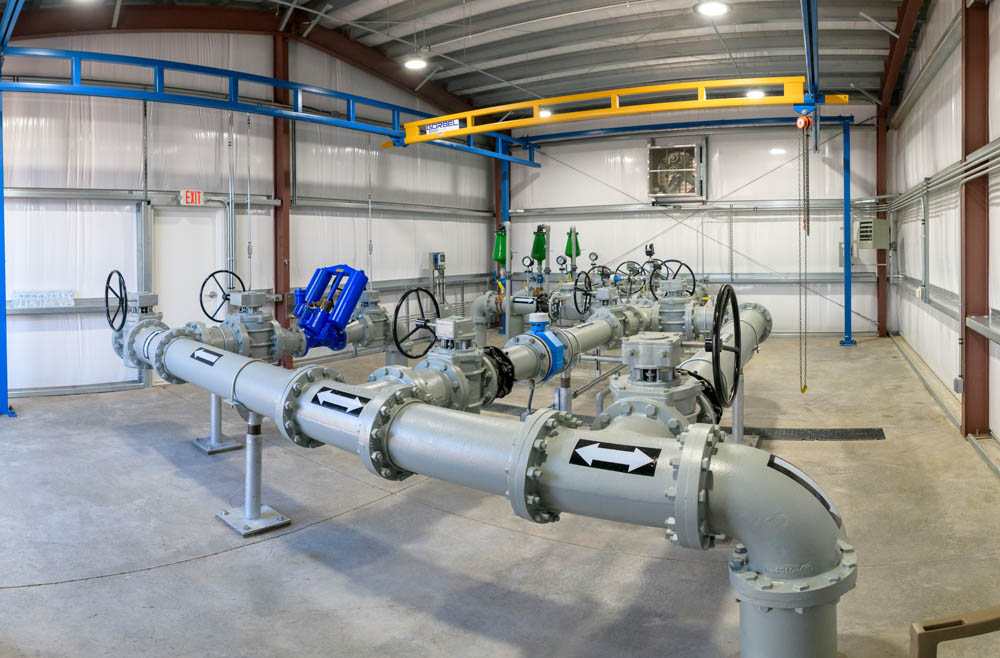

Inside Green Valley Water’s Chaparral Pines Lift Station 3.
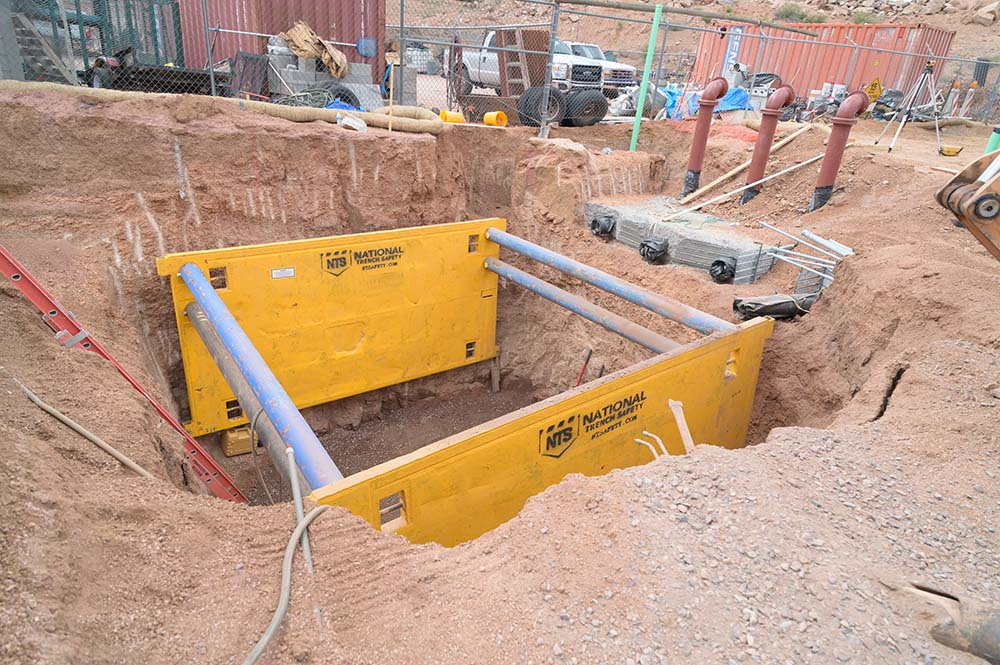

Construction on Chaparral Pines Lift Station 3 in May, 2021.
Prior to the rebuild of Lift Station 3, Garrett Goldman was busy making other updates. As Green Valley Water District Manager, he brought about a paradigm shift creating a more customer-centric operation. Previously, the philosophy removed the customer from the process—waste treatment had become an almost mythical beast to spare the customer from encountering: “Flush and forget.” The name change, logo redesign, radio appearances, and monthly public tours of the facility have all been part of the effort to shift the focus back on the customer. A vital step in facilitating this goal required an update of their information systems. Whereas before, cabinet upon cabinet of files held paper copies of plans, maps, service records, and other relevant documents, and every truck in the fleet was equipped with 60-80 maps, Green Valley Water’s sewer information network needed a change. Three years ago, Garrett implemented a Geographical Information Systems (GIS), what he describes as “maps on steroids,” to improve the efficiency of their operation.
Created by Esri, (Environment Systems Research Institute) the GIS is an interactive map of Green Valley Water’s service area which tracks the miles of underground pipes and the over 3300 manhole covers along these lines. The GIS is the backbone to Green Valley Water, allowing real-time updates to every component of the system, whether in the form of notes and photos from the field or customer concerns recorded at the office. To date almost half of the manholes have been inspected with information entered into the GIS dashboard, including GPS location, size, type, and age of the manhole, accompanying photos, maintenance records, and any other information relevant to each specific manhole. Again, with the customer in mind, this digital record includes active concerns, conversation notes, and task updates. Any Green Valley Water field worker has access to this comprehensive look at the entire network via an iPad, with updates viewable to all employees on the GIS.
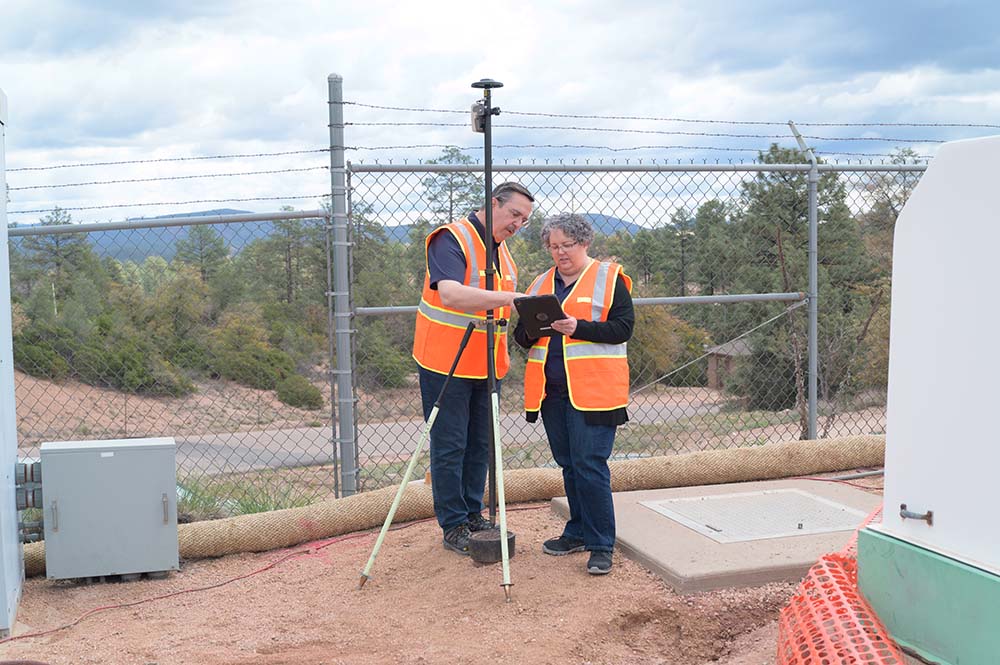

Green Valley Water GIS Analysts David Lower and Teresa Aguirre utilize GIS in the field at Chaparral Pines Lift Station 3.
In July, 2021, Jack Dangermond, president and founder of Esri, awarded Green Valley Water a Special Achievement in GIS (SAG) award in Digital Transformation for “being a player in creating a more sustainable world and future.” This year, 197 organizations and individuals received SAG awards, representing only one-tenth of one percent of GIS users around the world. In the “water/wastewater/stormwater” industry, Green Valley Water was one of only four U.S. entities recognized: two from Arizona, and one each from Pennsylvania and Texas. Green Valley Water joined five international SAG recipients in the same industry category from Australia, Côte D’Ivoire, Italy, Kenya, and South Korea. Recognized for their amazing work, SAG award winners are charged with the challenge to make a difference in the future—sharing best practices and progressing in their respective fields and in science. Looking forward, Green Valley Water plans to introduce CCTV cameras to the sewer lines, cameras that move along a cable to inspect and inform decision-making for repairs and asset evaluation. Integrated with the GIS, this video feed along with all other data collected will allow for a proactive approach in making decisions today that are in the best interest of customers for generations to come.



